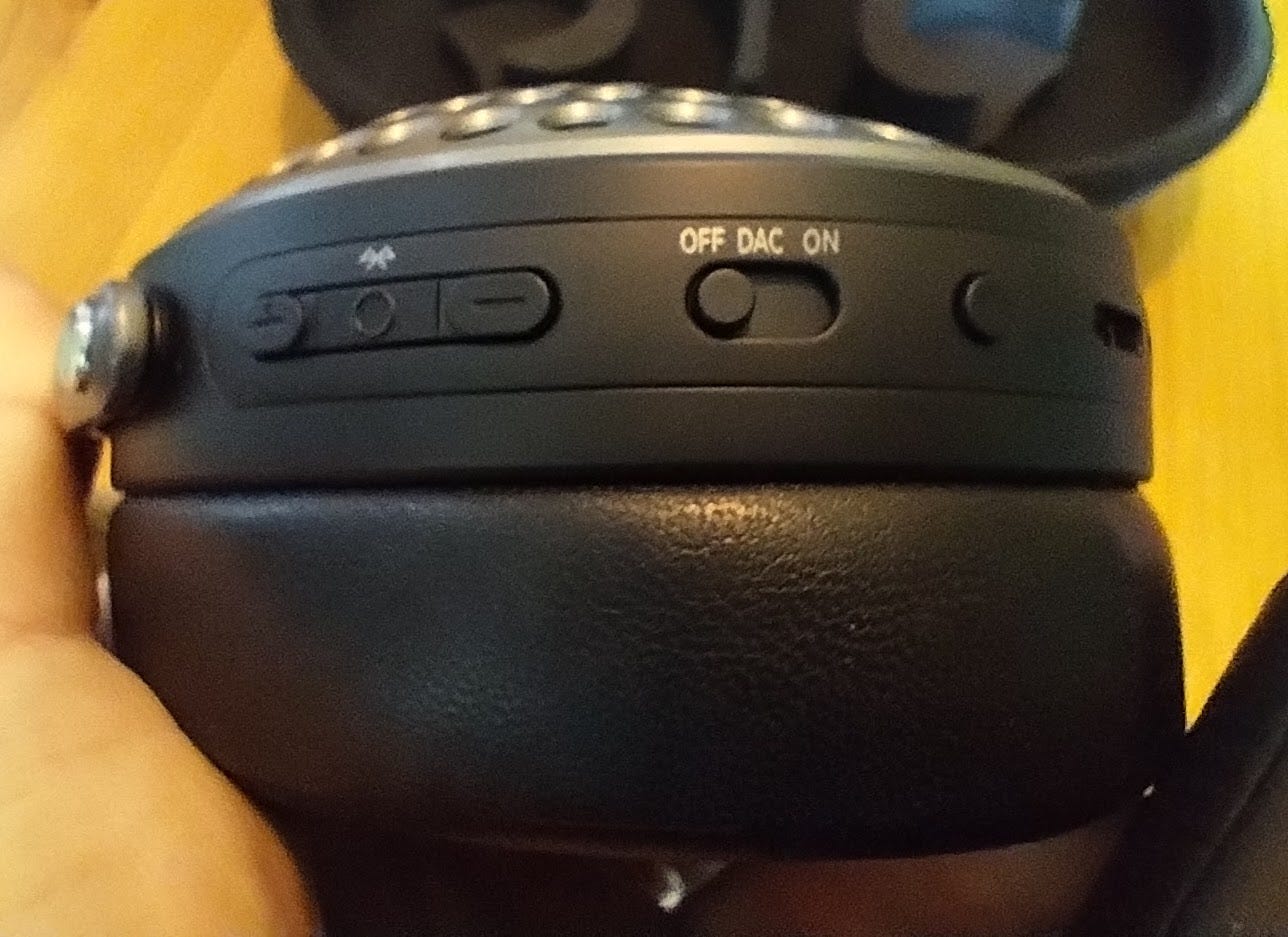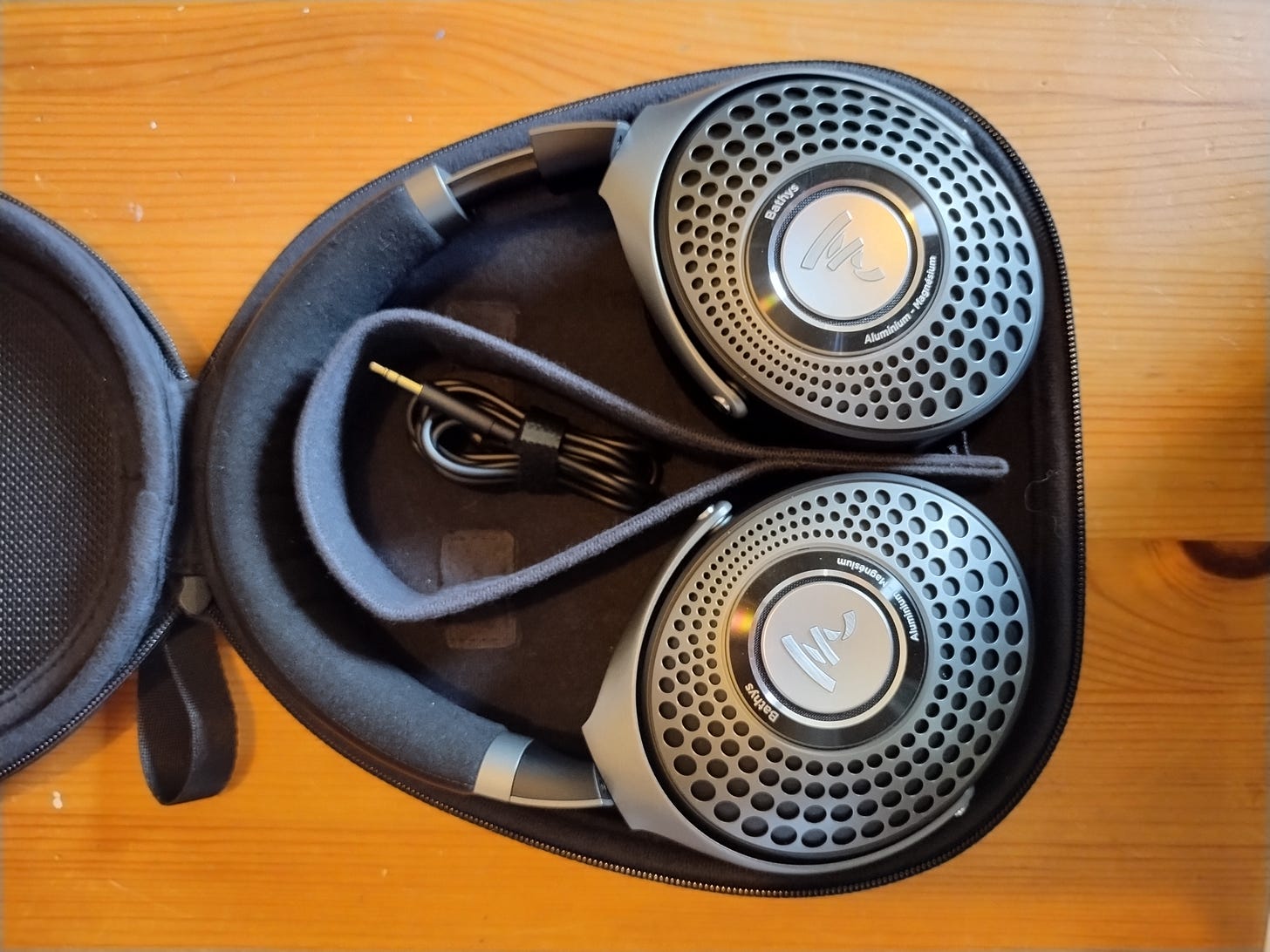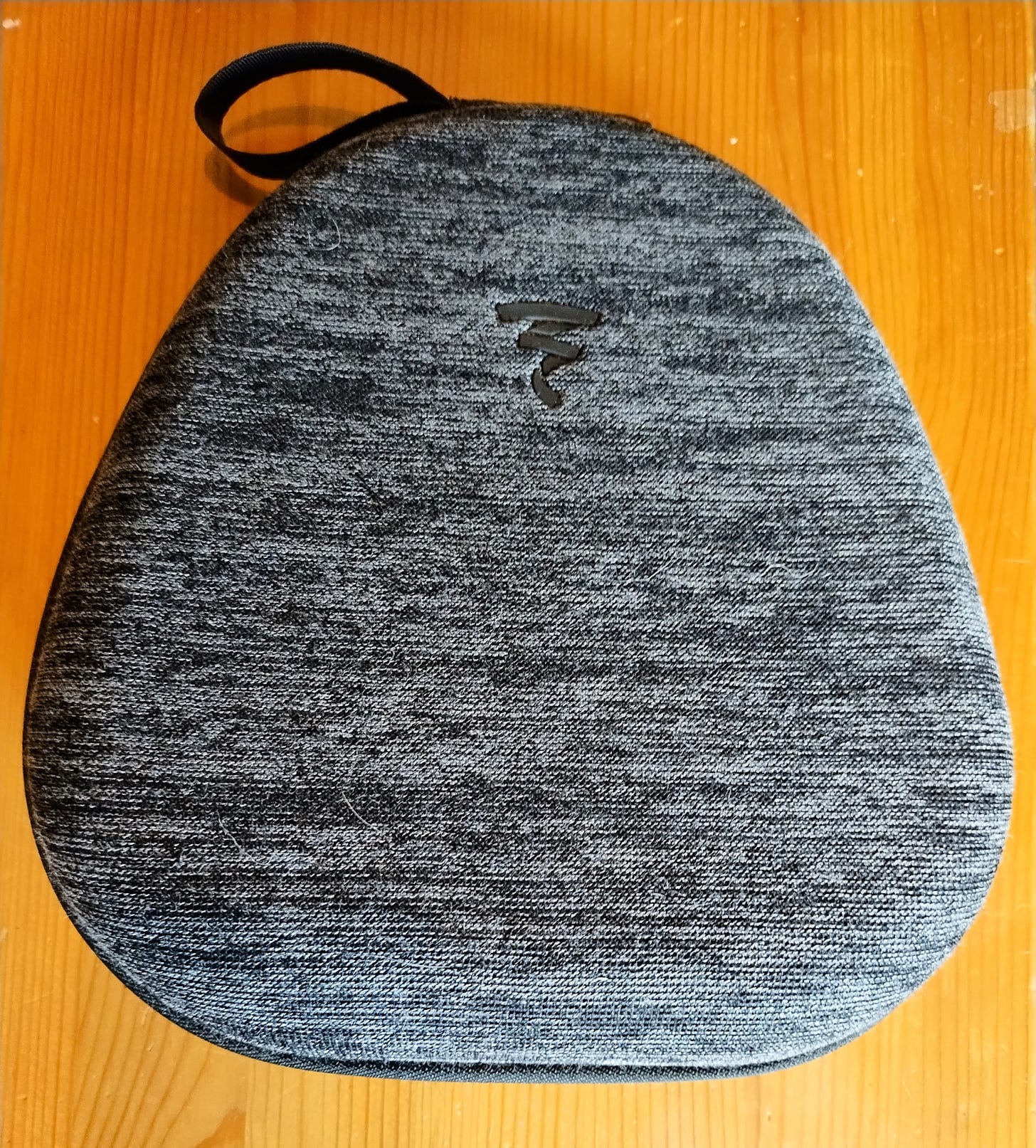Review: Focal Bathys Bluetooth closed-back, over-ear (supra-aural) headphones
The good looks of Focal with the great sound of Focal, with or without a wire
The Focal Bathys closed-back, Bluetooth headphones are my favorite of all Bluetooth headphones I have tried. They have active noise cancelling (ANC), and they also allow the listener to hear what is going on around them, while continuing to listen to music, with the press of a button. The many microphones on the Bathys facilitate both hearing ambient sounds (when in ANC-off mode) and allow for the noise-cancelling quality that the Bathys have. The person to whom I gave the Bathys as a gift was immediately floored by how quiet the ANC made the listening space. “I can’t hear the fish tanks!” she said. Usually, the sounds of our two fish tanks are audible throughout the main floor of the small house we live in.
Connecting to Bluetooth Devices with the Bathys
The operation of the Bathys headphones is made easier by their playing intermittent chirps of different types depending upon whether they are in Bluetooth pairing mode. The button presses required to hook up to a source device via Bluetooth are minimal. Simply slide the main switch to “On,” put the headphones on, listen for intermittent chirps to indicate the headphones are powered on (or look at the illuminated Focal “F” logo), then press the Bluetooth button located between the volume adjustment buttons. Hold that middle button down until the chirp changes to a modulated chirp of greater complexity than before and use a phone or other source to locate and pair with the Focal Bathys device that should appear in a list of available Bluetooth devices. I admit to having a bit of difficulty remembering that I had to hold down the Bluetooth pairing button for at least five seconds before the headphones would enter pairing mode, and I was confused about why I wasn’t seeing them on my phone.
User Experience
Using the Focal Bathys headphones is freeing. I’m used to dragging a heavy DAP along with me, which either requires I carry it in a hand or that I put it into a pocket. Doing household chores such as washing dishes is harder, just by enough to make a difference, with a wire trailing your head than it is going wireless with the Bathys. I have the Focal Clear Mg’s, and they are a similar design to the Bathys, at a different price point, and they are wired only; the Bathys can be wired, and it can function as a wired DAC, though that is not without its own complications.
I washed dishes yesterday, and my fitness bracelet gave me 14 minutes of “zone time” for scrubbing pans that had tough stuff stuck on them. I worked up a storm and raised my heart rate for a while. The freedom of not having wires, especially over a sink with water in it, was refreshing in the way dish water is not refreshing. The push-button switch to turn off ANC and turn on microphone-facilitated ambient mode is handy in case I need to talk to someone. The headphones can be used in a USB-wired configuration and using a single-ended 3.5-mm tipped stereo audio cable, for analog listening. ANC is not available when using the passive-wired, 3.5-mm input.
The Focals are closed-back and have good, adjustable ANC. There is a Focal phone app for the Bathys, used for controlling functions on the headphones (such as degree of ANC). Thankfully, Focal was wise enough not to try to include a remote. That would have been foolishness. The soundstage is relatively wide for closed-back headphones, though not as expansive as the soundstage of my Clear Mg’s is, which is fine. The Bathys headphones are collapsible, with the earpieces swiveling so the whole thing folds flat and fits nicely into a high-quality, appealing zippered carrying case, perfect for packing into a carry-on bag for flying or tucking into a duffel for driving. They aren’t heavy, but I feel them on my head, and I had to adjust the fit occasionally to keep them at max-comfort level.
Wearing glasses, as I do, often complicates wearing good headphones. The space inside the earpiece is big enough for my ears to fit inside without being crammed into a small space—though my auricles are relatively small compared to many people’s. It’s also easy to partially remove one earphone to facilitate conversation, sliding it so the ear is open to the room or outside air.
Tech specs for the Bathys can be found here: https://www.focal.com/sites/www.focal.fr/files/shared/catalog/document/fp_bathys_en.pdf. Notably, the Bathys can be used with digital assistants and for making and answering phone calls, since it has an array of built-in microphones.
Listening Impressions
Android (Motorola Moto g 5G 2023)
It’s best not even to consider using Bluetooth with my Android—hopefully, if you have an Android phone, your experience would be better. As when I was reviewing the Bluetooth use of the McIntosh MHA50 decoding headphone amplifier (here: https://hanscox.substack.com/p/review-mcintosh-mha50-decoding-headphone-09e), although my Moto g 5G 2023 was using the Qualcomm aptX Bluetooth codec, the soundstage was awful. Everything was crushed into the center. There was no soundstage to speak of. Simply using my iPhone 4S provided an expansive soundstage comparable to a good-quality DAP such as the Cayin N7 or the Astell & Kern SE180, or to my Windows (Dell XPS) late-model laptop computer. The DAPs have slightly better soundstages, but the three are comparable, and the Moto’s does not belong in the same category as the soundstage of these three. All used aptX.
iOS
iPhone 4S
The iPhone 4S provides aptX communication with the Bathys, and it provides a wide soundstage. At high-moderate volume, the bass pounds, the cymbals create a surrounding swoosh, and the piano is clear without what would be, in this context perhaps, an overly refined tone such as that used in classical works. I use this track because of the wide soundstage in the mix, which tests the capability of an audio system to reproduce its immersive quality.
iPad (7th generation)
The iPad provides a rich listening experience using Qobuz. Again, as with the Bluetooth listening review of the McIntosh MHA50, I imported/downloaded to the device, the album I used across all devices used in this listening test. For closed-back headphones, which are supposedly geared more toward depth than width, the Bathys have a wide soundstage. The drum kit is to the right, with the occasional tom hit way out to the right. The acoustic piano is to the center left, double miked to be wider in the mix. The bass is in the center. I think the Bathys do not have the soundstage depth of the Sennheiser 820 closed-back reference headphones, which are in a higher price point area than the Bathys and have a wired-only configuration. It is a pleasure listening to a piano trio with top-notch artists, using the Bathys. The live recording provides an immersive experience, where crowd applause surrounds me when it occurs. I rate the listening experience on the iPad as better than that of the iPhone 4S. The cymbals, and higher treble generally, have a richer high end with more subtle aspects of the evolution of each drum-stick strike being resolvable with the iPad to a degree greater than that when using the iPhone 4S. The soundstage is, I think, taller with the iPad, as well.
Windows Laptop (Dell XPS 17 9720)
The soundstage (wow, is soundstage all I talk about?) and treble response are like those of the Apple products, but there is the occasional brief interruption in playback, as if the Bluetooth connection from the laptop’s end is not supplying the track data quickly enough or reliably enough. This laptop is plagued by occasional freezing of the trackpad/mouse and keyboard inputs, so it is not a surprise that, though brand new, the music playback is not optimal using this laptop. The piano is a bit cleaner though, than it was with the iPad’s Bluetooth playback.
Astell & Kern DAP (A&futura SE180)
I notice that the piano is cleaner when using the A&K SE180, than it is when using the iPad. Not only that, but it is a bit cleaner even than when using the Windows (Dell XPS) laptop. The sound is better defined in the mix, and it has a sweetness the computer playback may lack. Both use aptX, but the A&K has had the highest quality Bluetooth sound of any of my devices, in previous testing of the McIntosh MHA50, though the Cayin N7 is a super-sounding DAP too and, with some music, I find it sounds better than the A&K SE180 using Bluetooth.
Cayin N7 DAP and concluding remarks on listening and usage
The strong, round bass response on the Cayin N7 is what stands out about it the most for me. It highlights the low-end response of the Focal Bathys, which is like that of the higher price point Focal Clear Mg. The piano is smooth too, like the A&K SE180 sound. The cymbal detail is refined, with the ringing of many of the strikes hanging in the air, gong like, bell like, like a metal celeste. The acoustic bass is played with an emphasis on the bottom end and a de-emphasis on higher frequencies that the instrument can make. This is the player’s choice in technique, and it also puts the bass into its own spot in the mix, holding the low-end range for itself. The piano does not have the audible low bass that it does in the solo classical piano on Francesco Tristano’s On Early Music (https://tidal.com/browse/album/211799449) because the acoustic bass occupies that area of the listening spectrum.
Lastly, the Cayin N7 sound is less mid-forward than A&K SE180. I remember that, in the CD insert (and maybe the tape too), Nevermind carried the recommendation for turning the bass and treble dials way up. That’s the sound we get on the Cayin N7, which makes it smoother and easier to listen to at higher volumes than the A&K SE180. The iPhone 4S also has a more forward mid-range. The mids are there with the Cayin N7, they are just not forward but the bass and treble are higher than with the iPhone 4S and the A&K SE180, making for the optimum listening experience for “Smells Like Teen Spirit,” I think. It is comparable to the listening experience with the Windows (Dell XPS) laptop, but the Cayin N7 has even less forward mids than the laptop has. Notably, this listening session, with Nirvana, the laptop Bluetooth did not include any interruptions due to imperfect wireless communications or the laptop’s OS going off and taking out the garbage, so to speak, when it’s supposed to be playing music.
A word on the UX of these various devices for Bluetooth listening is that not all volume controls are equal. The DAPs have very fine volume adjustment, and the volume of the DAP is tied directly to the volume-adjustment buttons on the Focal Bathys. So, the A&K SE180 and the Cayin N7 had the finest volume control, allowing me to tune my listening volume exactly where I wanted it. The laptop had the next finest control, while the iPhone 4S, the iPad (7th generation), and the Android Moto g G5 2023 all had coarse volume controls and produced unsatisfactory adjustment capability. Even the laptop’s volume control was so coarse as to be comparable with these mobile devices and not with the DAPs. The sound with the laptop and the mobile devices was either a bit too quiet or a bit too loud.
Recommendations
A mobile device—even an Apple iOS device—gives a great sound when using Bluetooth. However, if you intend to use the Focal Bathys with a mobile device, be aware that a fine volume control on the mobile device translates to a fine volume control via the Bathys headphones, and a coarse control on the mobile device (like my iPhone 4S or 7th generation iPad) translates to a coarse control via the Bathys. This is an aspect of most Bluetooth headphones I have tried, that the headphone volume control controls the volume of the source device. I would prefer to have the source device set to maximum or just below maximum volume, while adjusting the volume separately on the Bluetooth headphones. There are tradeoffs, but that would be my preference.
Of the several Bluetooth headphones I tried at an audio shop in town, I preferred the sound of the Bathys above them all. Even the slightly higher price point Mark Levinson 5909 did not have the spacious soundstage that I love in the Focal Bathys (and the Focal Clear Mg’s). The 5909’s are excellent wireless headphones, with a neutral presentation, with a bit of a narrower and shallower soundstage than the Focal Bathys. The soundstage is deep enough that the music didn’t seem to be right in my face when I tried it. But I liked the character of the Focals, the feel of them, and their looks, better, and they are a bit less expensive. I have not tried the wired/USB connection much on the Bathys, but on one device the source volume was pegged at maximum output, and it wasn’t adjustable. So, the sound was too much to wear the headphones. Be aware that when using the Bathys in a USB-wired configuration, this may be an issue depending upon the source device.
The Bathys are capable headphones, and I have enjoyed listening to them. I have not put them through the manufacturer's recommended 40-hour break-in period, and they sound great even so. They have a good, deep low-end response, and the treble is clear when using a high-quality source. The soundstage is wide and deep enough that the music is never in my face, a type of soundstage I find intolerable. They have the angled, coming-from-the-front positioning of the drivers, so they allow the ears’ auricles to play the role they naturally play when listening to sounds and music without headphones.
The combination of a high-quality DAP such as the Astell & Kern A&futura SE180, or the Cayin N7, is the best way to get great sound from the Bathys. The source greatly affects the resulting sound presentation, and these high-quality sources lead to happy listening. As a general observation, I have found the Bathys to work well with a variety of types of music, including live jazz, studio-recorded acoustic classical piano, and studio-recorded Nirvana. In carrying out these listening trials with various pieces of equipment, I have come to appreciate the value of a high-quality source recording and source device. If you intend to use the Bathys with an inexpensive Android phone, I advise you to consider upgrading your source to a quality DAP or even an iPhone 4S without a SIM card, for use as an audio player.
The Bathys may figure into a future post here, so you may hear more about it after I’ve had more time to use them. They’re excellent headphones and are priced within the range of someone looking for the next considerable step up from a lower price point. For the record, you simply must hear Herbie Hancock’s “Hang Up Your Hang Ups,” from the Man-Child album, through the Bathys (here: https://tidal.com/browse/track/1871163). That’s all for now!








